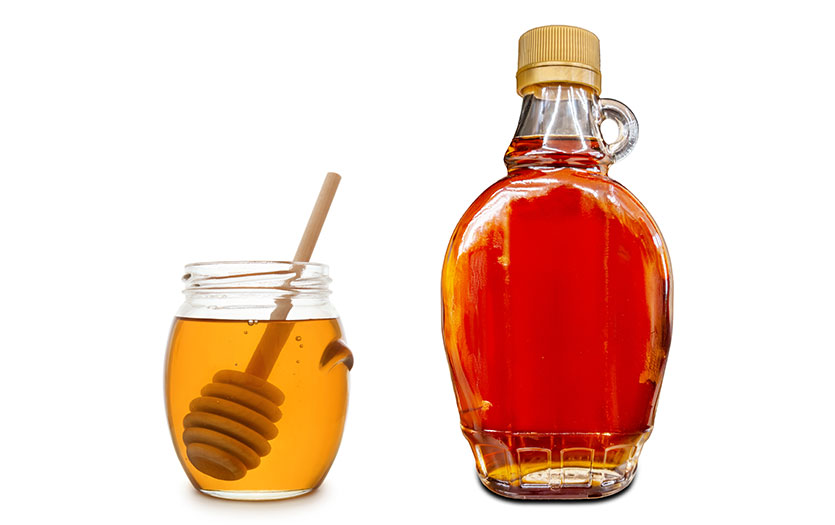
Eating and drinking too many added sugar can contribute to a number of health problems, like obesity, diabetes and heart disease. For that reason, it’s often a good idea to avoid or limit the amount of added sugars you’re consuming on a daily basis. Here are some tips on which foods you should stay away from as well as helpful information on sugar substitutes.
Foods and drinks you should limit
Sugars are often added when foods and drinks are processed or prepared. That means you should try to limit:
- Processed foods – Added sugars are common in:
- Drinks such as regular soda, fruit juice, sports drinks and energy drinks
- Desserts such as cakes, cookies, pies, ice cream and candy
- Many foods including bread, yogurt, baked beans and tomato sauce
- Condiments such as ketchup and salad dressing
- “Health foods” – Many foods that claim they are healthy may be low in saturated fat and salt but still have a lot of added sugar. This includes:
- Cereal, granola, crackers and nutrition bars
- Fat-free cookies, candies, chips and frozen treats
- Foods that have reduced sodium (salt) or fat
How to identify added sugars
Knowing what to look for when you’re at the grocery store or making purchasing decisions is crucial to being able to limit foods with added sugars. Before purchasing, you should:
- Check the ingredients list. If you see sugar (or another name for sugar) listed early in the ingredients list, that food has more sugar in it compared to the ingredients that follow it.
- Check the nutrition facts label. This label lists both total and added sugar amounts. It’s a good way to know exactly how many grams of sugar you are getting. An average adult should consume a maximum of between 24 and 36 grams of sugar a day; kids aged 2–18 should have a maximum of 25 grams a day.
- Watch out for hidden sugars. Added sugars are not always called “sugar” on the ingredients list, making it hard to identify them in foods. If you see these words in the ingredients, they are a form of sugar or contain sugar:
- Agave syrup
- Corn sweetener
- Corn syrup
- High-fructose corn syrup
- Evaporated cane juice
- Fruit juice concentrate
- Dextrose
- Fructose
- Glucose
- Lactose
- Maltose
- Sucrose
- Honey
- Molasses
- Syrup
The lowdown on sugar substitutes
Sugar substitutes are used in place of sugar. They taste sweet but do not contain any sugar. Although sugar substitutes have fewer calories than sugar, most have little to no nutritional value and should be limited just like sugar. Sugar substitutes fall into three categories:
- Artificial sweeteners – Also called non-nutritive sweeteners, these sweeteners are created in a lab from chemicals. Artificial sweeteners do not have beneficial nutrients, and some experts believe they pose health hazards including risk of weight gain and cancer. Examples include: acesulfame potassium (ACE-K), advantame, aspartame, neotame, saccharin and sucralose.
- Sugar alcohol – Sugar alcohols are created synthetically but often from different types of sugar. They are not as sweet as artificial sweeteners but can cause gastrointestinal irritation like bloating, gas or diarrhea. Examples include: erythritol, isomalt, lactitol, maltitol, sorbitol and xylitol.
- Novel sweeteners – These sweeteners are derived from natural sources and are sometimes referred to as “plant-derived noncaloric sweeteners.” Novel sweeteners provide many benefits of both artificial and natural sweeteners like fruit or honey. These are low in calories and sugar content and do not impact weight gain or blood sugar spikes. Examples include: allulose, monk fruit, stevia and tagatose
Help employees achieve wellness goals
Parkview Employer Solutions partners with area businesses, delivering innovative services to improve the health and well-being of employees. Workplace Wellness provides resources for local businesses to create a healthier workforce, including health risk assessments, wellness coaching, health improvement programs, wellness screenings and more. Contact Parkview Employer Solutions to develop a wellness program that benefits your company, your employees and your community.
Copyrighted material adapted with permission from Healthwise, Incorporated. This information does not replace the advice of a doctor.



